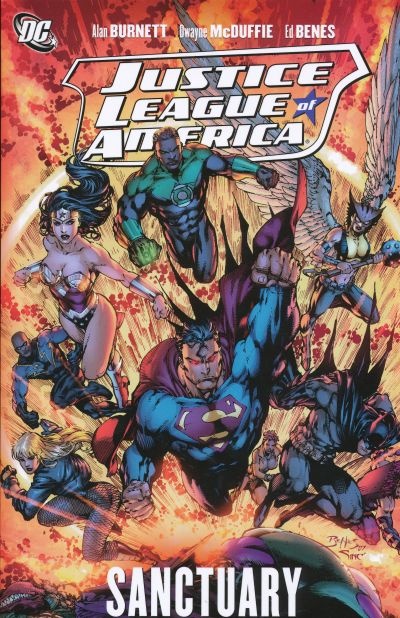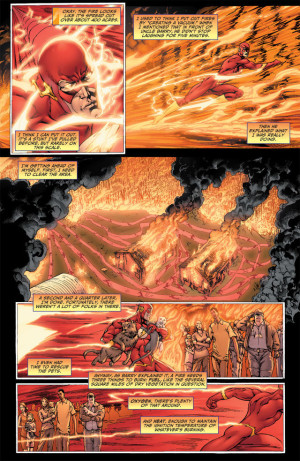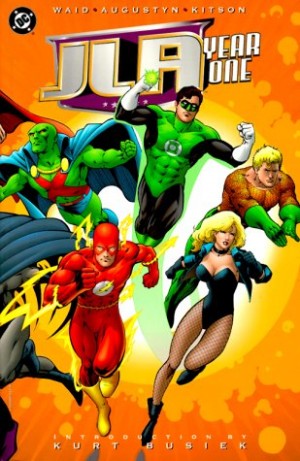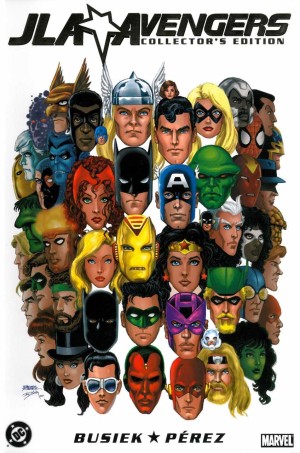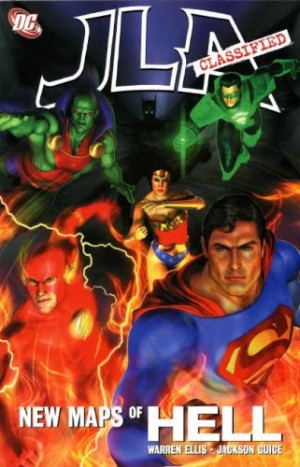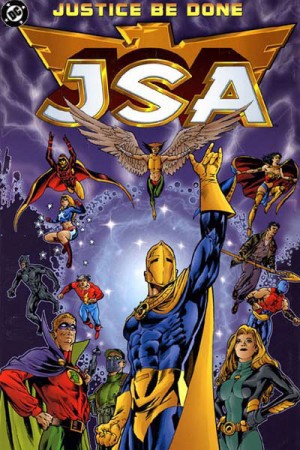Review by Jamie McNeil
In contrast to The Injustice League, Sanctuary is more a collection of individual stories as villains run scared, claiming they are being hunted down. This leads to a ‘the enemy of my enemy is my friend‘ situation as they turn to the Justice League for protection.
The title story is written by Alan Burnett in two parts, with obvious parallels to theories on the detainment of extraordinarily dangerous individuals, various government policies around terrorism and the Guantanamo Bay detention camp in the real world. It poses ethical questions such as whether these are necessary evils or an infringement of basic human rights, is a war on terror really justifiable, and how far is too far? However, by focusing mainly on the attitudes and moral dilemmas the League have to confront while facing the Suicide Squad it delivers a disjointed tale that skirts any serious answers.
This might be because the main details of a mysterious prison planet are covered in Salvation Run, while villains running from the Suicide Squad is a feature of Countdown to Final Crisis. Burnett doesn’t really commit to subjecting any League members to a ‘moral microscope’, possibly as that was the focus of Identity Crisis. Instead it paddles aimlessly around the deep end, while simply supporting storylines in the aforementioned titles in the build up to Final Crisis.
Ed Benes and his team of inkers maintain a sense of dread with some dark and gloomy shading to create tension and highlight the presence of shadowy government agencies. However the art is stronger at the beginning than it is at the end for both parts of ‘Sanctuary’, and this inconsistency affects the overall quality.
Dwayne McDuffie supplies four chapters, with character-centred stories for Red Tornado, Vixen and Flash that build on elements of their personal lives started in Brad Meltzer’s run on Justice League of America. These are all better and smoother than the title story, but the stand out is ‘Meanwhile, Back at Owl Creek Bridge…’. It has the Red Tornado as a ghost in the machine considering the implications of his body’s destruction and whether it will be worth renewing it, as his family will never have a real human being present in their lives, only a very realistic android with a soul.
Jon Boy Meyers draws some sterling pages for the Red Tornado and Vixen stories, making them stand apart from Benes’ work. They are bold and sharp with, good use of contrasting bright colours and dark shading from Serge LaPointe and Mark Irwin. In ‘Back Up to Speed’, Ethan Van Sciver convinces that the Flash is the fastest man alive using colours and contrasts to create an almost realistic atmosphere in places.
The last McDuffie contribution builds to events in Final Crisis, with a look at arrogance and the bitterness it might breed in other people. There are minor inconsistencies of characters supposedly in the League’s custody hanging out with villains from Salvation Run, and if you’ve not read that title or the Countdown series, the plot may confuse. Carlos Pacheco and Jesus Merino play with lighter auras surrounding heroes and darker ones around villains, which endows a sense of sides being chosen.
Burnett and McDuffie’s stories clash rather than compliment, as McDuffie excels at putting the spotlight on individuals or smaller groups of characters. While Sanctuary waivers, McDuffie’s short stories redeem the day. The series continues with Second Coming.
